
Badami
My previous post starts with the problem of getting a bus from Bidar to Bijapur and the fickleness of non existent timetables. this post will be no different. the previous day I’d been told there was a bus from Bijapur to Badami at 6.45am. Arriving at the station at the appointed time I was then told there was no direct bus but I had to get the 6.45 bus to Kerur and change there. That would arrive at platform 4. To cut a long story short I was then directed to a bus that was leaving the station (at 6.20) and clambered aboard. The bloke sat next to me confirmed we were off to Kerur, he then started with the oft repeated refrain, “What is your country?”. I replied the Isle of Man and was then rather surprised when he whipped out his phone, asked me to type in the IOM and we then proceeded to watch Youtube videos about the Isle of Man in Hindi. It passed the time. At Kerur, the bus to Badami was waiting for me, so it was soon off again to my final destination and I duly arrived in Badami at 9.15.
the receptionist at the Hotel Mayuri Adil Shah in Bijapur had managed to book me into the sister government hotel in Badami – the Hotel Mayura Chalukya and it was equally pleasant. Unfortunately they didn’t have my favourite Indian breakfast, Aloo paratha and curd, but they could make me an egg sandwich which wasn’t too bad.
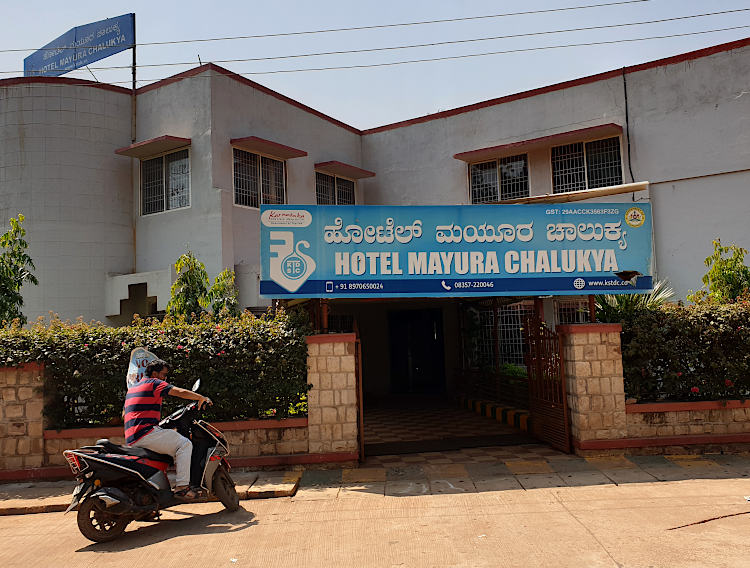
After a freshen up, I was out to see the highlight of Badami – the Badami Caves, carved in the 6th century onwards by the Chalukyan Dynasty. Normally I get to monuments first thing in the morning to avoid the crowds and there were quite a few local tourists when I got there but they soon left and once again I was by myself to explore these amazing caves. Although carved almost 1500 years ago I had never seen such high quality carving. They were truly amazing and far better than I had anticipated.
Cave 1. Although cave 1 is the smallest, it was immediately clear how much rock had to be excavated to make these temples. This was the oldest and carved in the 6th century and dedicated to Shiva.



Cave 2 was similar but dedicated to Vishnu. It fronted onto a large terrace with great views over the town and lake.




Cave 3 is the largest and most impressive with some superb relief carving not only on the walls but also the the ceiling and column brackets.







Cave 4 is smaller and more recent than the other caves and very different. It is a Jain shrine and has dozens of carvings of Jain figures.




All over the site was a troupe of macaques but, rather unusually in my experience they were actually well behaved one of them posing for photographs with some women.



I came down from the caves and explored the small old town which sits at the west end of the lake that is almost surrounded by the horseshoe of sandstone hills. From here I could see the caves and also some more temples at the top of the hills which I was to explore later. Upon leaving the cave area the first thing I saw was a small Adil Shai tomb (17th century).

Within the warren of streets of the old town is another temple – Jambulinga temple (699) and the Yellama temple which over looks the lake. By this stage I was rather peckish and was fortunate to find a delicious thali.
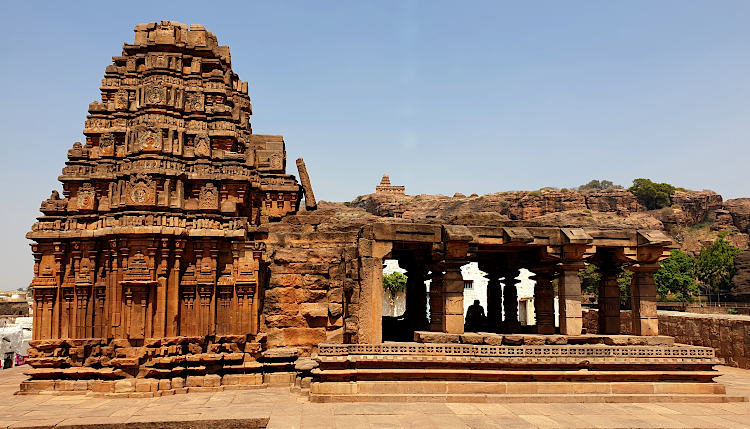





Then it was time for my usual siesta before heading out again. Although 3.30, it was still very hot so I decided to head for the cool of the archaeological museum. It was fairly interesting but one of the quirks of Indian bureaucracy meant no photos in this particular museum. However the curator cajoled me into climbing the hill behind to see the Upper and Lower Shivalaya temples temples both from the 7th Centuries. Although a bit of a climb and it was still very hot it was worth it for the views alone.
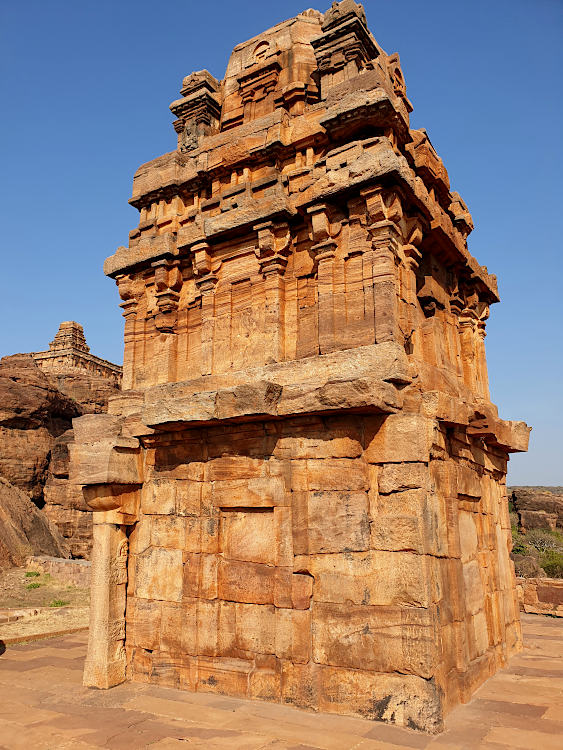
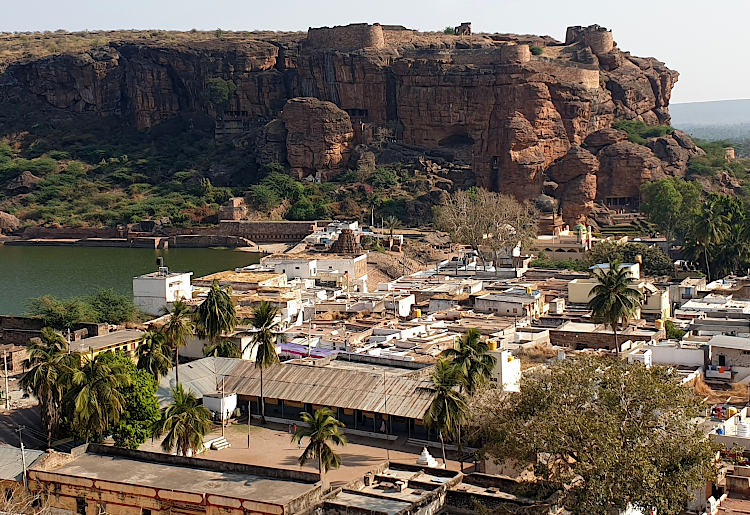
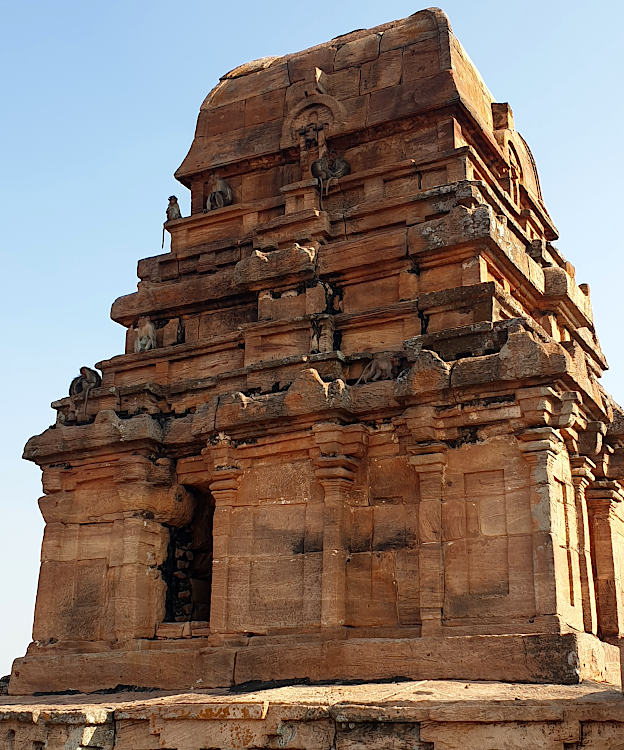

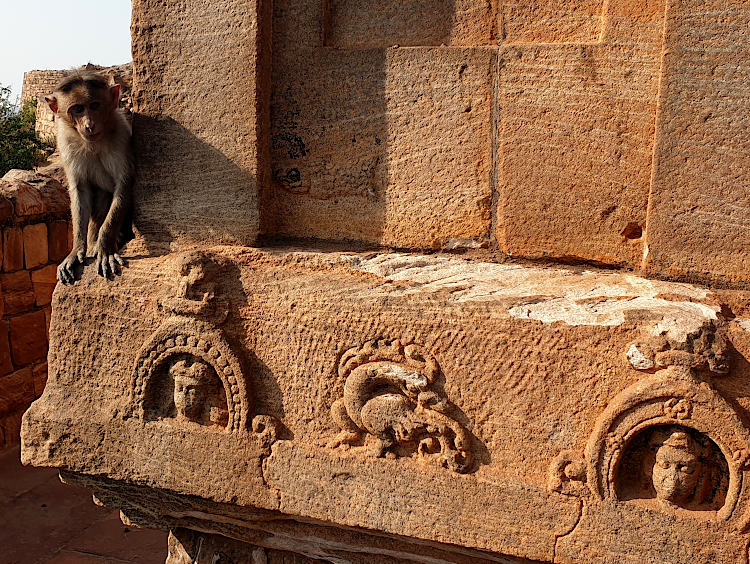
At the upper temple were a tribe of inquisitive monkeys so I needed to keep an eye on my belongings.
I came down from the Upper temple and walked round by the side of the lake and the ghats to the end of the lake to the picturesque Bhuthanatha temple.

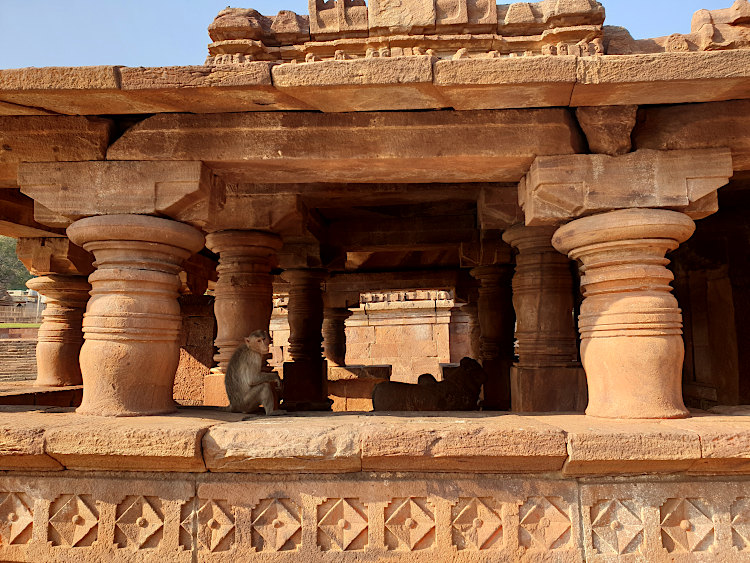

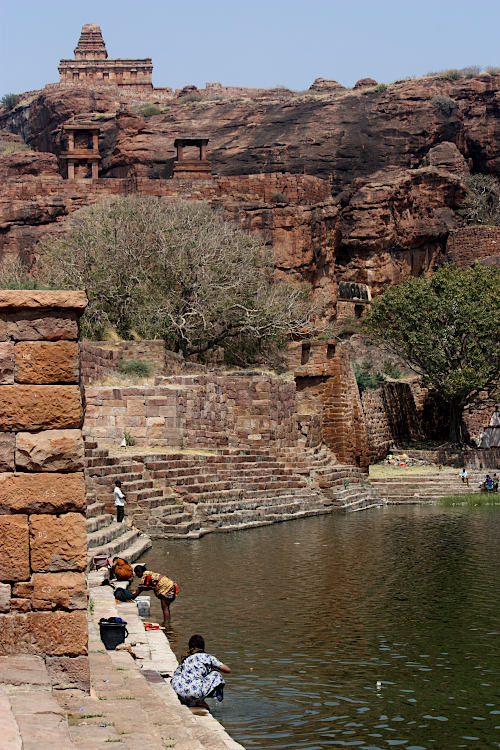
Back in town I had a late afternoon snack and took a few photos around the market including of these women in ethnic dress who were dancing and busking for tips.

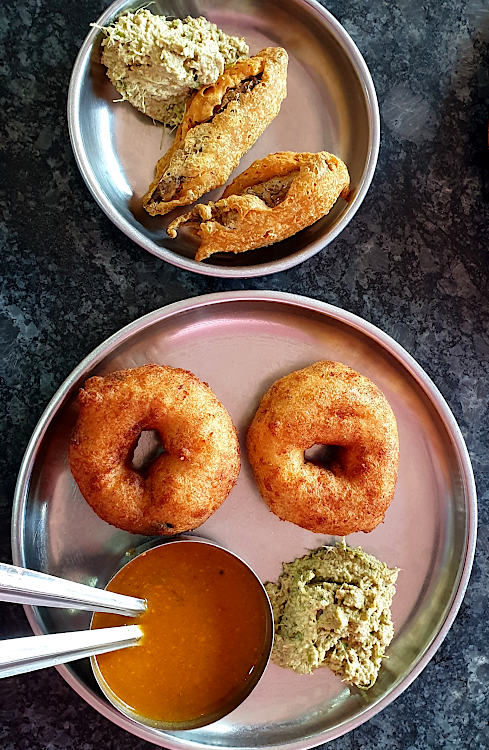

Badami links: Outlook India, Yatrikaone, Wikipedia
23rd February. Near Badami are two more impressive temple sites, Pattadakal and Aiole. Public transport to these outlying villages is pretty sporadic so I had arranged to hire an auto driver for the day (1200Rs). He was waiting outside the hotel at 8am so we were soon bouncing along a potholed road to Pattakadal. It’s about 15kms so took us about 30 minutes. As it’s a World Heritage site, foreigners pay 600Rs (It’s usually 300Rs for popular sites which don’t make the World Heritage status).
Like a number of similar sites throughout India, back in the day there would have been villagers living amongst the ruins, however, since it was declared a Heritage site all the locals would have been moved away. Walls now surround the site and well tended gardens put in place, which in turn makes these heritage sites rather soulless and bare. Anyway, I paid my fee and then wandered the site. There are quite a few temples but the best two are at the far end, the Virupaksha and Malikarjuna temples. Like the Badami caves, they were constructed by the Chalukyas around the 7th century. 
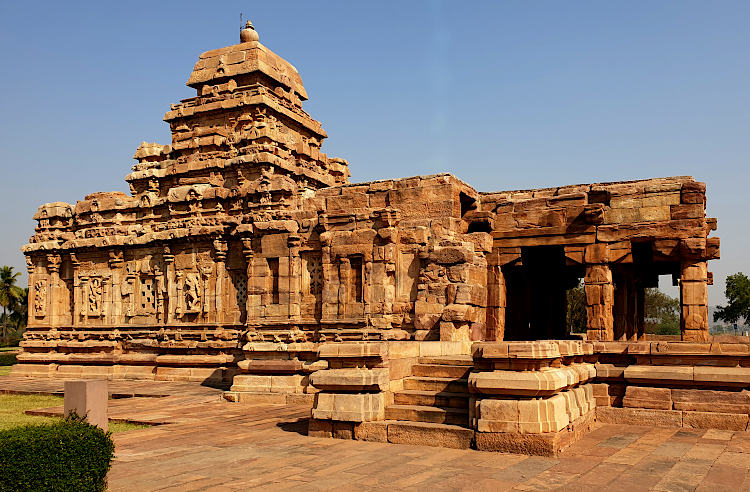
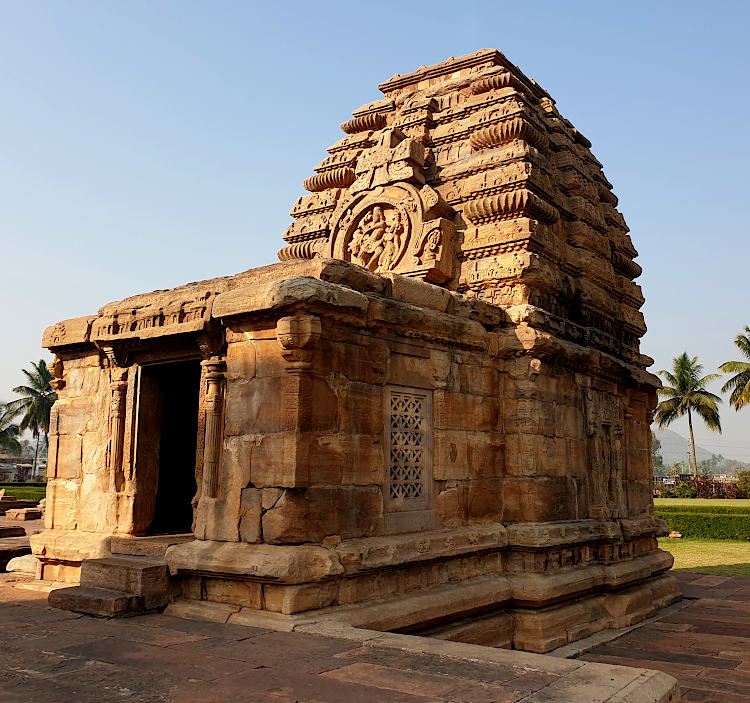

The photos below are the insides of the Virupaksha and Malikarjuna temples. Although built almost 1500 years ago the carvings are pristine and exquisite. Some of the finest carving I have ever seen making it worthy of its world heritage status.










Coming out from the temple complex my Auto driver was ready to drive the few kilometres through a fertile valley to our next stop – the Aihole temple complex. I could see there were some fine temples scattered throughout the small village but I headed for the main, walled off area. Not quite making it to World Heritage Status meant that entry was only 300 rupees. Like Pattadakal, the original villagers had been evicted from the main site and in fact one temple was named Lad Khan after the Muslim man who had apparently lived there. The most famous temple here is the Durga temple because of its age and unique shape.




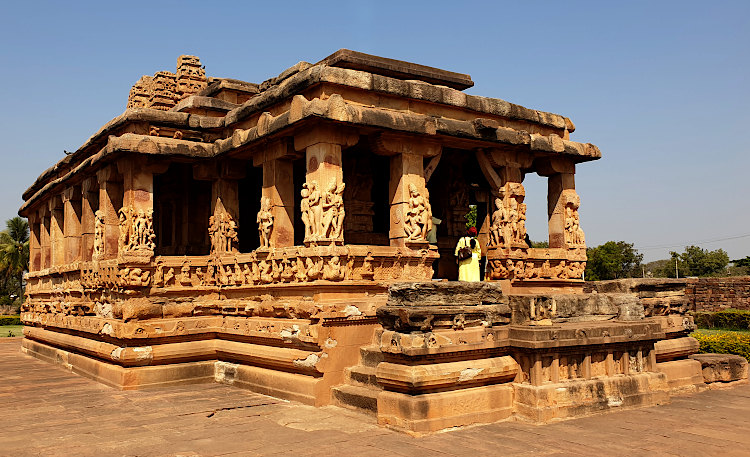
We left the main complex but I wanted to see a couple of other temples nearby. So I got the driver to take me to a small rock cut temple which in fact turned out to be one of the most interesting of the lot featuring some dancing girls in amazing tall hats. I’d never seen anything like that before anywhere.
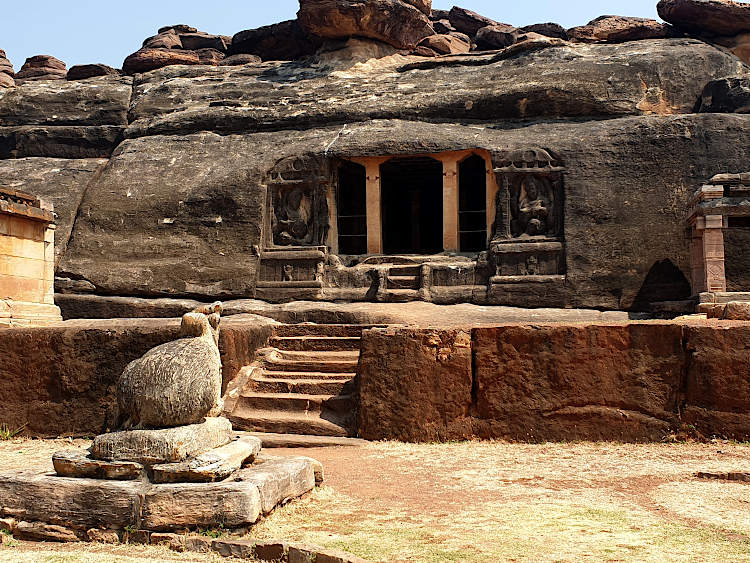
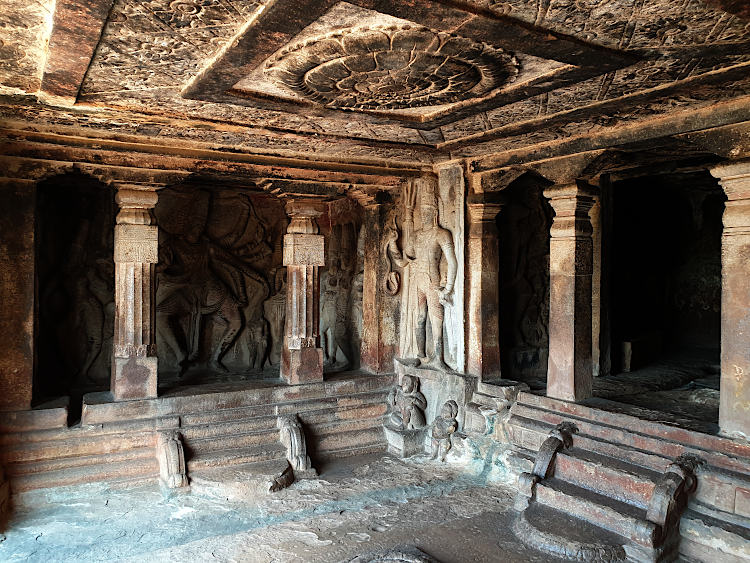
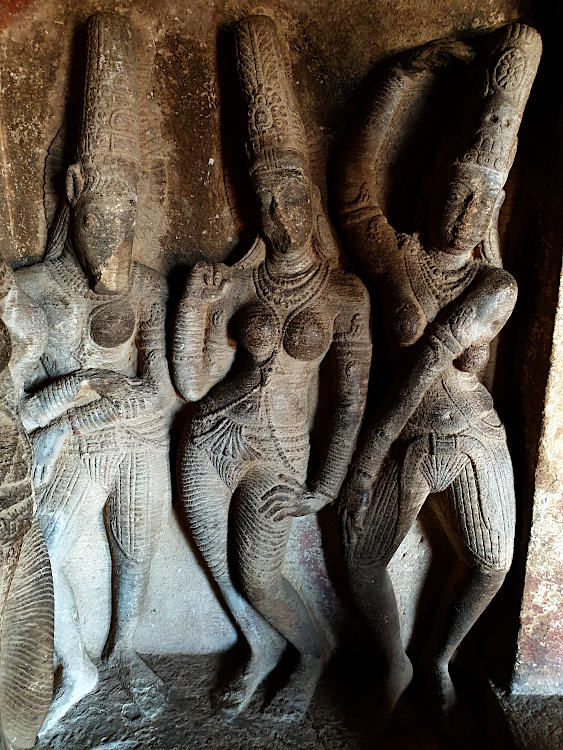
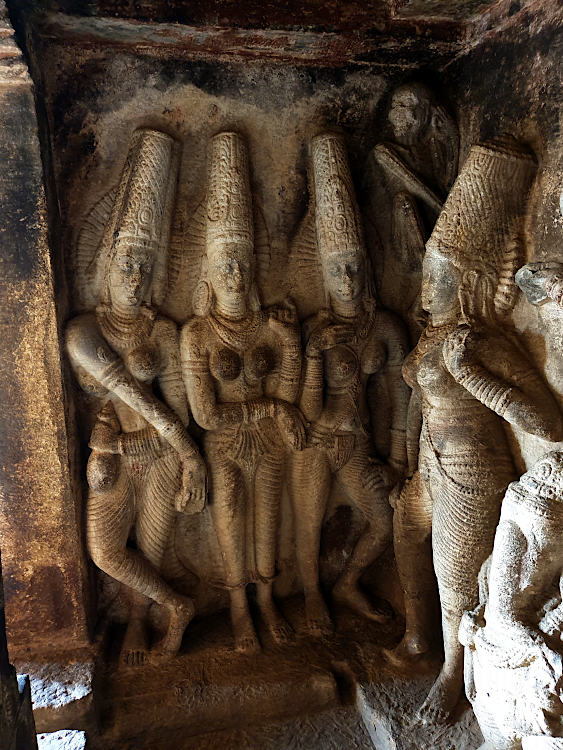
After this temple, time for just one more, the fairly remote Sri Hucchimali Gudi. I noted that it wasn’t that interesting except to say that it was inhabited by a tribe of Langur monkeys whereas the only monkeys I had seen previously were macaques.
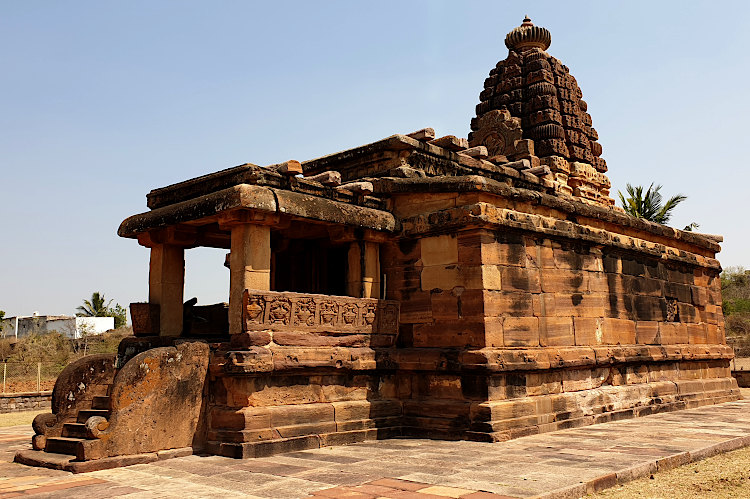
More photos here
Map of the journey: